Although Istanbul spans the Bosporus, the strait separating Europe and Asia, and is home to some of the world’s oldest neighborhoods and monuments, Turkey’s largest city is resolutely Western. Istanbullus relish their between-two-worlds positions, perched between classical and modern, religious and materialistic, Christian and Muslim, and the clash of cultures offers visitors a dazzling tableau of living history.
Istanbul could be called the Paris of Asia Minor, not just because it overflows with arts, culture and history: the locals also wear a lot of black, smoke constantly and eat, drink and gossip at the outdoor cafes. Because Istanbul is crowded—with 13 million people, it’s the third largest city proper in the world—people spend most of their lives outdoors. Young people live for the clubs, bars and open-air restaurants that line the main thoroughfares in Beyoglu, the traditionally European enclave, and Sultanahmet, the city’s historical heart and biggest tourist draw.
While Turkey doesn’t legally recognize gay relationships or do much to encourage LGBT communities, gay culture is growing more visible in Istanbul. Gay and straight kids mix easily in clubs and within Istanbul’s dynamic street life. For the inside scoop, drop into the Pride Travel Agency (Incili Cavus Sokak, Ates Pasaji 33, 90 212 527 0671, travelagencyturkey.com), Istanbul’s only LGBT travel and tour company. Owner Derya Koroglu has been serving LGBT visitors for the past nine years, and she tells GO it wasn’t always easy. “At the very start, we encountered unbelievable problems. We were sued for [conducting] gay tourism in a Muslim country; nobody wanted to work with us; we couldn’t find any tour guides,” she says. But things have definitely changed for the better, mirroring Turkey’s own shift toward a more accepting attitude. The agency helps more than a thousand customers annually book at gay-friendly hotels, leads custom-designed tours with gay tour guides and points visitors in the direction of Istanbul’s LGBT bars and clubs.
Women travelers should feel safe and comfortable in Istanbul’s central neighborhoods. Aside from the rare catcall, young men won’t pay much attention to women traveling alone or in pairs, any more so than in New York or Paris. The typical advice holds true: watch your belongings, be aware of your surroundings and be respectful. If you plan to visit mosques or other places of worship, dress conservatively and bring a scarf with which to cover your head.
Start your adventure at a centrally located hotel in Istanbul’s compact center. Eklektik Guesthouse (Kadribey Cikmazi 4, Galata, 90-212-243-7446, eklektikgalata.com), Istanbul’s first and possibly only explicitly gay-friendly B&B, occupies a seven-room Ottoman-style house. Each room is decorated with Turkish, bohemian or Asian touches. Eklektik’s double-occupancy digs are affordable, if snug, but the view across the Bosporus from its rooftop garden is worth a million euros. It’s perfectly located within walking distance of Istiklal, Beyoglu’s major thoroughfare for shopping and dining.
The recently restored Pera Palace Hotel (Mesrutiyet Caddesi No. 52, Tepebasi, Beyoglu, 90 212 377 40 00, perapalace.com) was built in 1892 to accommodate passengers from Paris traveling on the Orient-Express, which terminated in Istanbul. Agatha Christie’s mystery Murder on the Orient Express was inspired by her numerous stays in the Art Nouveau suites. Today, visitors can reserve rooms named for the author or the sumptuous Greta Garbo Rooms, where the icy blonde stayed for three weeks in 1924. All feature vintage furnishings, air-conditioning and WiFi.
A bit further east from central Beyoglu, the ne plus ultra in exotic luxury, Çiragan Palace Kempinski (Çiragan Caddesi 32, Besiktas, 90-212-326-4646, kempinski.com) occupies part of a former Ottoman palace built in 1871 overlooking the Bosporus, toward the Asian side. The five-star hotel boasts 313 rooms and suites surrounded by palm-shaded gardens, lush landscaping and a sparkling infinity pool. The original marble-clad hamam (Turkish bath) has been fully modernized while retaining its Belle Epoque elegance, and rooms reflect the rich upholstery and textiles synonymous with Turkey.
Aside from offering a multitude of affordable hotels and hostels, Sultanahmet is the epicenter of Istanbul’s historical must-sees. Three such sites should be at the top of any visitor’s list: Aya Sofya (also spelled Hagia Sophia), the Blue Mosque and Topkapi Palace, located next to one another at the mouth of the Golden Horn. Aya Sofya (Aya Sofya Sq., 90 212 522 1750), a massive early church built by the Byzantine Emperor Justinian in 537 AD, became the seat of Eastern Christianity for almost a thousand years. In 1453 Muslin conquerors turned it into a mosque; today it’s a museum. Though the fragile building is under constant repair, the power and beauty of the mosaic-covered walls and dome, 90 feet in diameter, is not to be missed. Every surface inside the huge space is a glittering work of reverential art.
About a thousand years after Aya Sofya was completed, Sultan Ahmet I created the Blue Mosque (Hippodrome, 90 212 518 1319) next door, hoping to rival the older building’s brilliance. With six minarets and the biggest courtyard of any mosque in Istanbul, the Blue Mosque is a study in extremes. The curved walls, covered inside with distinctive blue tiles, and multiple domes exude affluence. But the space is still used as a place of worship, so dress respectfully and bring a light scarf to cover your head when visiting. (In fact, always carry a scarf with you: you’ll never know when you might come upon a sacred place that piques your interest.)
You could spend an entire day exploring the courtyard, rooms and galleries in Topkapi Palace (Babihümayun Caddesi, 90 212 512 0480, topkapisarayi.gov.tr), the opulent fortress built for Ottoman rulers in the mid-15th century. Gaze at royal objects encrusted with jewels in the Imperial Treasury, including an 86-carat diamond; the Sacred Safekeeping Rooms hold priceless Islamic relics like the hair and teeth of the prophet Mohammed. The Topkapi Harem is worth the extra admission charge: in the sultan’s private family rooms, hundreds of female concubines lived according to strict rules of behavior and trained as ladies-in waiting for the royal family, guarded by an army of eunuchs.
To see a lot of notable historical buildings in a short amount of time, hop aboard the Bosporus commuter ferry (sehirhatlari.com.tr) plying the waters between the Sea of Marmara and the Black Sea. Boats leave from the dock at Eminönü near the Galata Bridge and travel 90 minutes to Andolu Kavagi near the Black Sea, with numerous stops in between. Step off to explore mosques, ruined palaces and coastal villages.
When in Istanbul, do as the Istanbullus do (or did): come clean at a Turkish hamam. Though the advent of indoor plumbing makes these public bathhouses mostly obsolete, the bathing ritual has been part of the local culture since Roman times. Cagaloglu Hamami (Yerebatan Caddesi 34, 90 212 522 2424, cagalogluhamami.com.tr), housed in 300-year-old marble chambers with soaring vaulted roofs, offers the traditional bath, scrub and massage, plus an on-site cafe and shop. There are separate entrances and sections for men and women, and only female masseuses attend to female guests, according to Turkish custom.
Beyond its purely cultural offerings, Istanbul is a shopper’s paradise. There are three main shopping areas in Beyoglu, and an entire neighborhood—the Bazaar District—bordering Sultanahmet to the west.
Istiklal is entirely pedestrianized, except for the trolley that runs down the middle of the street. Both sides of the thoroughfare are lined with restaurants (including an inexplicably popular Burger King) and shops selling clothing, electronics, knick-knacks and Turkish souvenirs. After dark, Istiklal becomes Beyoglu’s nightlife hub.
Balik Sokak (Fish Street) branches directly off Istiklal with the best food shopping in Istanbul. There are dozens of restaurants, mostly serving seafood—which Istanbul’s seaside location ensures is extra-fresh—and several fish dealers. The Kariköy fish market (not to be confused with Kadiköy, a neighborhood on the Asian side) is the best place for fresh fish, but it’s more intimidating than Balik Sokak. The merchants call and try to coerce you into their shops, so unless you’re cool with being heckled, just observe from a distance.
The Bazaar District encompasses the Grand Bazaar, the Spice Bazaar and hundreds of individual shops outside the bazaar walls. This is the crucible in which to hone your haggling skills. Vendors will attempt to bring you into their stores and offer you tea and friendly banter, but you have no obligation to purchase anything unless you want to—at a mutually agreed-upon price. “You don’t have to haggle, but you’ll be ripped off if you don’t,” says Erin Cochran, GO’s former associate publisher and a professional personal chef, who lived in Istanbul last year. “At first I was nervous about it, but I don’t think the shop owners take you seriously if you just take their price. My tactic was to let them quote me a price, say 60 Turkish lira. Depending on whether I thought it was reasonable or not, I would counter with half or 60 percent, say 35 lira. And if they said no, I would walk away. Nearly every time they would come after me, saying, ‘okay, okay, okay, how about 40 lira?’ It was both intimidating and exhilarating.”
The Grand Bazaar (Kapali Çarsi) is a gigantic labyrinth of vendors, coffee shops and cafes. It’s touristy, but you’re bound to find something to love among the 4,000 stores huddled under the covered pavilion, which originated with the Ottomans in the 15th century. It’s easy to get lost (bring a compass, or at least a friend with an excellent sense of direction) while shopping for Turkish carpets, lamps, leather goods, housewares, gold, silver, backgammon boards, tea sets, antiquarian books and so much more.
The heavenly Spice Bazaar (Misir Çarsisi) will fulfill every dream of succulent Turkish apricots and plump, sweet dates, plus all manner of spices, nuts, honey, dried fruit, preserved meats, cheeses, teas and coffees. This newer bazaar, dating from the 1660s, also has its share of tourist souvenir stands. But where else can one find “Turkish Viagra” or other love potions?
Around the bazaars, vendors continue the commercial rhythm. Street snacks make refueling easy and cheap. Buy a few simit (flaky, warm sesame bread rings) for breakfast, then leblebi (roasted chickpeas) or roasted chestnuts for a mid-afternoon pick-me-up. Cold stuffed mussels are reserved for late-night, après-bar chowing.
Outdoor cafes dovetail with Turks’ love of being out on the street. Try meze (little plates of dips, pickles, olives and cured fish) and raki (anise-flavored liquor ordered by the bottle) if you want to eat like the locals. Waiters walk by the tables with trays of food, and you simply point out which nibbles you’d like. Don’t pass up chicken or lamb kebabs, dressed with spicy sauce, lettuce and tomatoes, and wrapped in flatbread. Top off the meal with delectable baklava—there are dessert restaurants that specialize in up to 20 different kinds of the honey-drenched delicacy.
Though you may be tempted to nosh on Turkish delight, “I never saw anyone but tourists buying and eating it,” Erin tells GO. And steer clear of another ubiquitous street snack, the dubious Islak burger: a very saucy sloppy joe on a white hamburger bun that rests in a steam cabinet for several hours so the whole thing gets a little soggy.
Istanbullus love their nightlife. Erin recommends bar-hopping in Beyoglu on Nevizade, an impossibly narrow street crammed with ground-floor restaurants and outdoor tables, and strung with overhead lights. Music wafts from every door, indicating the presence of a rooftop bar—some marked, some nameless. It’s common for club crawlers to simply follow the disco thumps up a narrow flight of stairs to an open-air roof bar.
“I looked for signs of life at the tops of buildings from the street level, then walked up unmarked staircases to see if there was a bar on the roof. I was pleasantly surprised most of the time,” Erin says. Just be careful when you’re leaving: “most of the bars are seven or eight flights up, and most stairs are marble because all of the buildings are really old. Someone inevitably spills a beer on the stairs around 2 a.m. It can be very slippery.” Consider yourself warned!
Gay nightlife is a fraction of the overall scene, but new clubs open every so often. The English-language magazine Time Out Istanbul (timeoutistanbul.com/english) has up-to-date gay and lesbian bar listings. One you shouldn’t miss: Bigudi Club (Balo Sokak 20, 4th and 5th Fl, 90 0535-509 0922, bigudiproject.net), Istanbul’s only full-time lesbian café and bar. It just celebrated its fourth birthday.
In the Taksim area of Beyoglu, Rocinante Café (Sakizagaci Caddesi, Ögüt Sokak 6, 90 212 244 8219) attracts a mostly lesbian crowd with affordable drinks and an all-lesbian staff, and Otherside (Istiklal Caddesi, Zambak Sokak 2, 90 212 235 7914), a gay club with professional shows and live music, appeals to Istanbul’s lesbians despite the steep cover charge. For amazing views of the Bosporus served with your cocktails, walk up to Besinci Kat (“Fifth Floor,” Siraselviler Caddesi, Soganci Sokak 7, 90 212 293 37 74, 5kat.com) and snag a table on its rooftop bar. Inside, the restaurant looks like an elegant bordello, decorated with purple drapery and gold chandeliers. Besinci Kat is located in the same building as one of the city’s oldest gay bars, Barbahçe (90 212 245 17 18).
Compared to Western European destinations, Istanbul is a travel bargain—but it is a long haul trip: about 10 hours on a nonstop flight. Turkish Airlines (turkishairlines.com) is your best bet for the least expensive nonstop itineraries. Plan to spend at least a week exploring all of Istanbul’s many charms. n

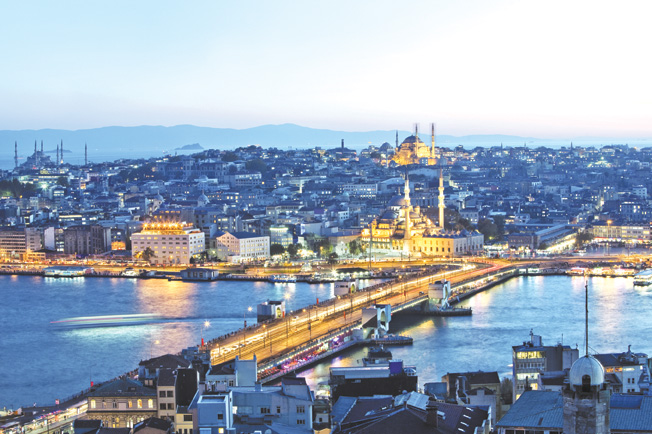
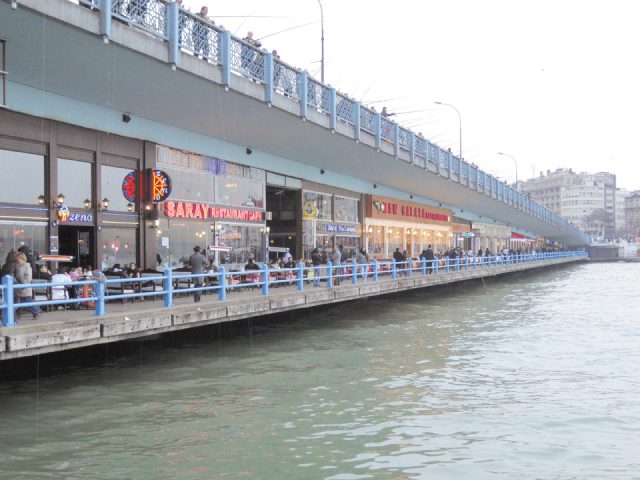

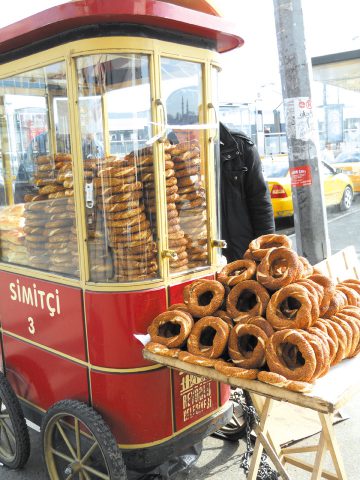
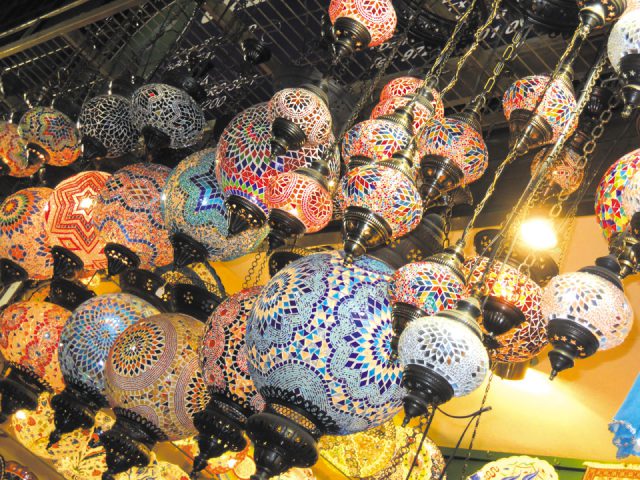


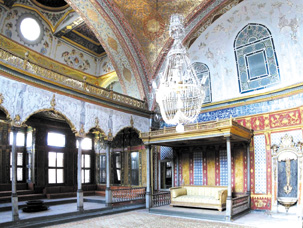
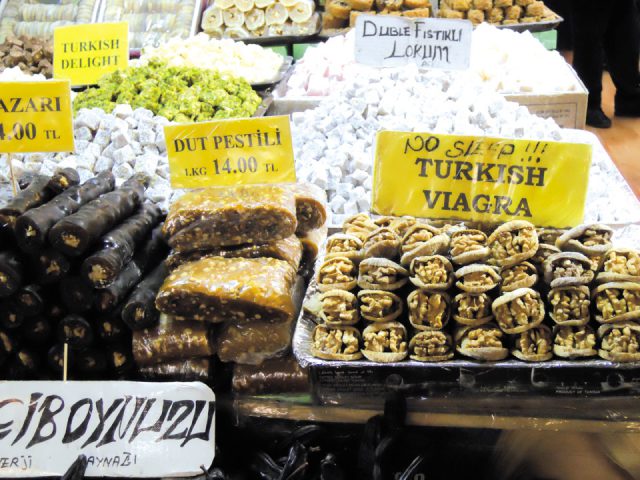
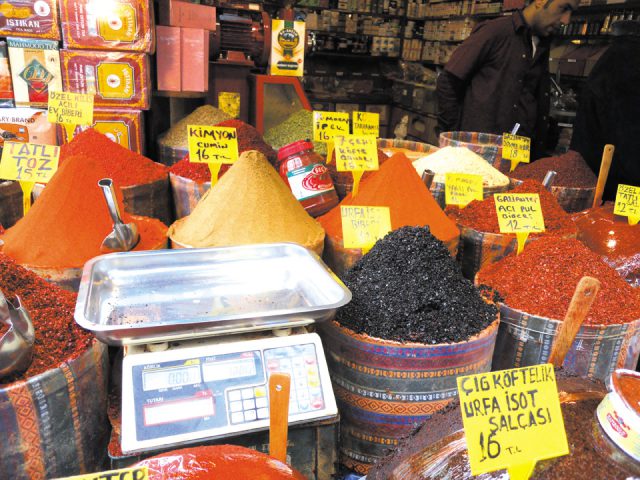

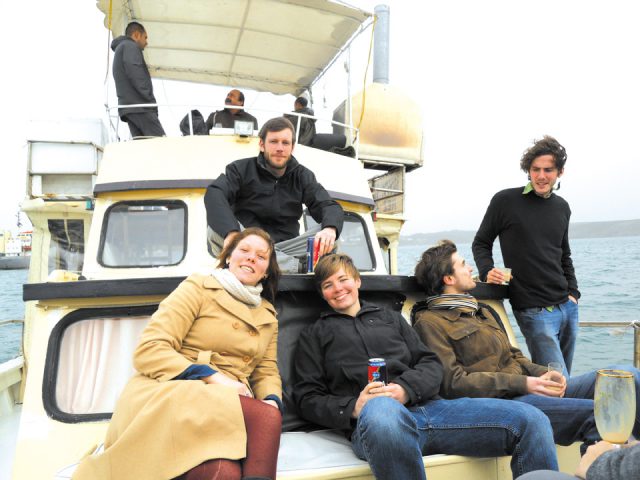


What Do You Think?